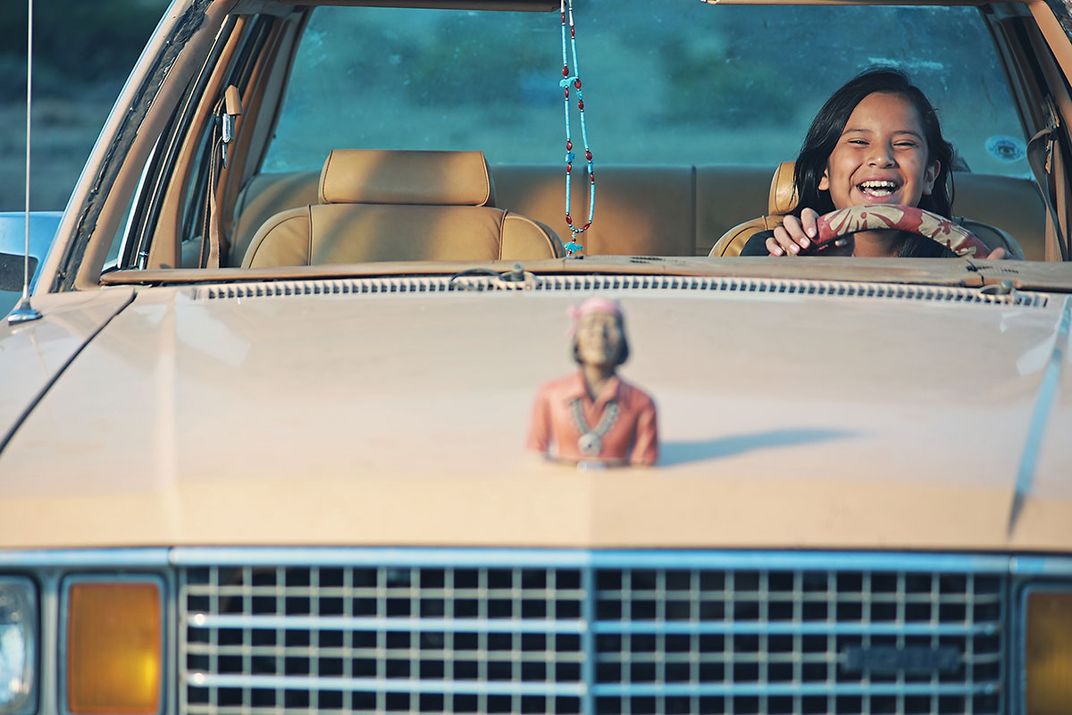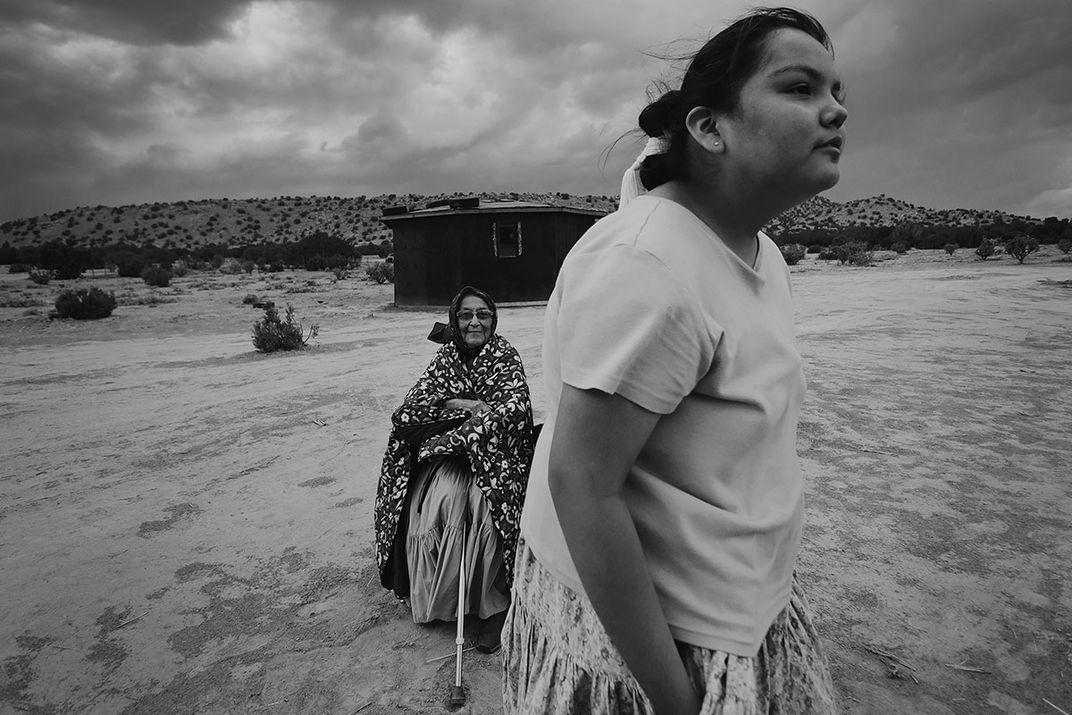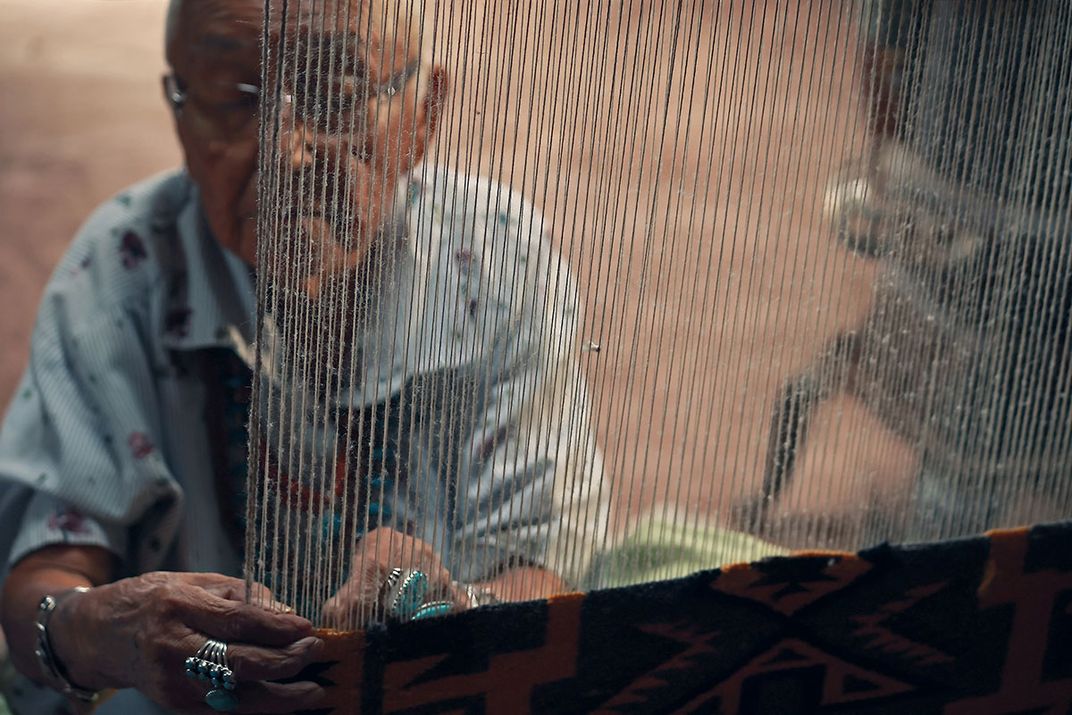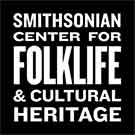SMITHSONIAN CENTER FOR FOLKLIFE & CULTURAL HERITAGE
Filmmaker Billy Luther Explains How Frybread Face and Me Was a Labor of Love
Luther’s narrative feature debut opened the 2024 Mother Tongue Film Festival at the National Museum of the American Indian in Washington, D.C.
:focal(600x400:601x401)/https://tf-cmsv2-smithsonianmag-media.s3.amazonaws.com/filer_public/84/3c/843c1f70-4c1f-43c0-bb31-235b13f5f101/billy-luther-frybread.jpg)
“That guy! He does not live in the Hózhó.”
“I don’t care where he lives.”
“Hózhó, dummy. It’s not a place. In Navajo, it means harmony.”
Filmed in New Mexico with an almost entirely Indigenous crew, Frybread Face and Me shares the journey of two Navajo cousins, Benny and Dawn (or “Frybread Face”), who come together for one summer to live on their grandmother’s ranch. It is a story of family, hardship, loyalty, and knowing the importance of one’s roots. It is also the narrative feature debut of writer and director Billy Luther.
Luther, who is Navajo, Hopi, and Laguna Pueblo, studied film at Columbia College Chicago and Hampshire College in Amherst, Massachusetts. In 2000, he interned at the Smithsonian’s National Museum of the American Indian in New York City, helping produce the museum’s Native American Film + Video Festival. Twenty-four years later, Luther’s own story comes full circle as Frybread Face and Me opened the Smithsonian’s 2024 Mother Tongue Film Festival at the National Museum of the American Indian in Washington, D.C.
The Mother Tongue Film Festival is an annual public event that brings together Indigenous and minoritized language filmmakers and creators from all over the world to participate in a multiday festival in Washington, D.C. This year, the Mother Tongue team was honored to (virtually) sit down with Luther and learn more about the story and meaning behind the film.
What made the Frybread Face and Me crew unique?
It was important for us to have Natives in front of and behind the camera. We were filming in New Mexico, so we had a very good pick of Native crew, and it was fun to see how many Natives were in the business—everyone from the camera crew to production assistants. It was just a great experience.
We built that entire land from scratch, and the Navajos who were in the production and props were able to build from their experience, from their own grandmothers’ ranches. You couldn’t have gotten that from a non-Native art department or props because they would probably go by pictures and photos. We really wanted that lived experience on set, and they created this environment that felt real. It was just incredible.
Why was it important for the story to be told through the eyes of a child?
One thing I thought about when I was writing this story was an experience I had. I grew up off the reservation, and many people would say that I am an “urban Native.” I’m part of three tribes. I’m Navajo, Hopi, and Laguna Pueblo. In the past, whenever I went back to the reservation, whether to my paternal grandparents’ in New Mexico or my maternal grandmother’s in Arizona, I just felt kind of like a fish out of water. But with the experience of being there for the summer, I came to be much more immersed in my community, my culture.
That experience was profound and lifechanging for me. I think it is an experience that many people have, Native or non-Native. I just wrote what was personal and what was my memory. I just knew as a child, we’re still developing who we are, our identity, and I wanted to go through that with this young kid, Benny. If I went through this as an adult—you know, as an adult you’re already influenced by the outside world, and you have this lived experience where you kind of lose your innocence as you get older.
When I travel with the film, there’s a lot of non-Native audience members that come up to me and say, “You captured my summers at my grandmother’s. You captured the love I had in my family, something that I didn’t remember, memories that I didn’t know that I had.”

You captured the experience of coming to an age when you start to realize the adults in your life have their own flaws and unresolved issues from when they were younger.
When I grew up, a lot of those past trauma or experiences that my relatives had started to make sense, and I began to understand why they were that way. I guess, as a kid, you look at them and you just see you. You don’t know. Nobody talks about it.
For instance, Uncle Marvin. We probably all have an uncle like that, and I don’t pinpoint it. I don’t reveal why he is the way he is. I just want [people to see that] some things don’t need to be answered. I think that the people who get it, get it, and the people who want that answer are still trying to figure things out.
How does the reservation serve as a positive influence for people who grew up on or around it, and where does it fall short?
The world of the reservation is unique. The reservation of every tribe is different. What I’ve noticed and heard through feedback is that the film resonates with people from different reservations because, even though they are not Navajo, they understand. They know the experience.
Just like the characters in Frybread Face and Me, I feel this understanding when I look at my cousins. My cousins are so comfortable [on the reservation]. I had someone say [the reservation] was the poorest, most poverty-stricken place they had ever been in their life. But that’s not the way we see it. My grandmother, of course, didn’t have running water or electricity, but that wasn’t necessary. We didn’t consider it poverty. It was just the way of life. Our people lived off the land.
So yeah, I think that by showing the world of Benny and Fry and the land that their grandmother is on, many people would consider it poverty. But I consider it home.
In the opening lines of the narration, we hear about the importance of symbols in Navajo culture. We see, as one example, forks are used as a symbol for Benny’s cultural identity but also his sexuality and gender identity. What was the inspiration for other moments in the movie?
The fork was a huge part of being a family. The bent, crooked fork was meant to say: you’re not family. And then the experience of Benny receiving the other normal fork resonates with him: you’re family, you’re home. The funny thing is, when I was growing up, my mother had a cutlery set, and there was one piece that stuck out. It wasn’t crooked, but it just stood out. So, whenever we had a guest over, I would set the table and put that fork where the guests would be sitting because I would think, like, I don’t want their germs.
As I was writing, memories like that just came flooding back to me. I look back, and I laugh at the fork. It’s funny. So, the fork was something that I put in, but there were a lot of things that I put into the film, too. Like the doll, Jeff Bridges. I had a generic Cabbage Patch, and the head would pop off. I just threw all the things that I felt were just part of my life that I look back and think it’s crazy or wild. That’s all writing. That’s art. You go back and use those things as you work.

Is the recent emergence of Native stories in popular culture something you ever thought you would see? How do you hope to see this momentum continue?
We’ve had some incredible artists who really opened the door for us, but it wasn’t just these past few years. It goes back. The filmmakers Larry Littlebird and Joy Harjo, and others—people forget that those are the artists that really broke the barriers and knocked down the walls. [They] really are the reasons why we’re able to be where we are now.
Twenty years ago, Sterlin Harjo, Taika Waititi, Blackhorse Lowe, and I were trying to make our films. We were struggling artists, but we just kept working. Taika was kind of one of the first Indigenous filmmakers in the past twenty years to really have [massive] exposure. His famous speech at the Academy Awards was really a wakeup call for the filmmaking industry.
One thing that I really agreed with him on was his stance about panels. We Natives are always on panels about what to do about representation. While on a panel, he asked, why do we always have to be in these panels? The industry always puts these panels together, but they are the reason why we’re always on these panels and not working. This also could go back to Bird Runningwater and the Sundance Institute Indigenous Program that many, many Natives and Indigenous filmmakers came from.
I think that right now, we’re in an exciting time. Erica Tremblay has Fancy Dance coming out this year with Lily Gladstone. Lily also gives great exposure to many actors and filmmakers. She does a lot of mentioning of small films, and she posts about them on social media. I’m writing right now on Dark Winds for AMC. It’s my third season. There are Natives in the writers’ room. We’ve got a lot of projects that are happening and are in development.
We have an audience. There is an audience out there. I was surprised when Netflix released Frybread Face and Me at the perfect time during the holidays. Over Turkey Day weekend, when many people were at home and families were together, Frybread Face and Me went to No. 4 on Netflix. That was shocking because I just didn’t think that it would be that big.
A lot of high-profile Natives like Lily Gladstone and Zahn McClarnon posted about the film. Native social media really helped and gave us free publicity and advertisement. It was such a small film. We had no funding for advertising. Its success was surprising. But I’m so glad that everybody was able to see the work that the crew, the cast, and the whole team accomplished. It was a labor of love for everybody.

How has your personal sense of Hózhó, of balance and harmony, changed over the course of your life and career? How do you find and maintain balance?
Growing up in a city in California, away from my community, it was just what it was. I grew up with parents that were different tribes, and there was no language in our house that my parents could communicate with [other than English] because my father was Hopi and Laguna Pueblo, tribes that used two different languages, and my mother was Navajo and spoke Diné, another. My mother would try to teach us, but my parents worked so much that my brother and I were really left to be kids. My experience going to my grandmother’s for a summer gave us more language, but we’d lose a little of the language that we learned once we came back home.
I knew I wanted to be a filmmaker when I was probably eight years old, and as I got older and went to high school and college, I started thinking about making Miss Navajo. Developing the story was really the birth of me reconnecting with my culture and my identity. I believe, in every single project I’ve worked on, language has always been the thread of my storytelling and my stories because I make stories about my community, and when I do that, I learn so much. That is where I find my balance and my harmony.
For instance, the Dark Winds television series is set in the 1970s on a Navajo reservation. So, I’m learning a lot about what happened there during that time. And with Frybread Face and Me, I learned so much from Sarah [Natani, who plays the grandmother] because she is a weaver. That’s her livelihood. That’s what she does. The great thing about being an artist is that you’re always trying to find something new. You’re always learning, and you’re always wanting to understand and get closer to the truth. I believe that’s every story, every film that I work on, every project.
Even now, as I develop Miss Navajo into a feature, that script now brings me back into my culture, language, and identity. That is what my purpose in life is: to understand and learn, but also to entertain and expose others to a unique perspective and an engaging and entertaining story.
This interview was conducted by Gabe Silverstein-Rivera and edited for clarity and length.
Gabe Silverstein-Rivera is an intern with the Mother Tongue Film Festival, based at the Center for Folklife and Cultural Heritage. He graduated from the College of Charleston in May 2023 with a BS in sociology. A former Smithsonian Folklife Festival intern, he will be returning in 2024 as part of the tech crew.
Kirby Ewald is the strategic communications coordinator for the Center’s Cultural Vitality Program and the Mother Tongue Film Festival. She creates and manages communications plans for the program while also supporting general digital communication projects for the Center.
This program received federal support from the Latino Initiatives Pool, administered by the National Museum of the American Latino.
